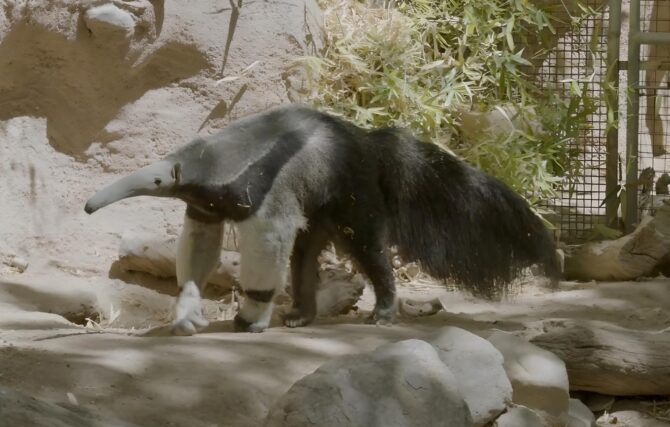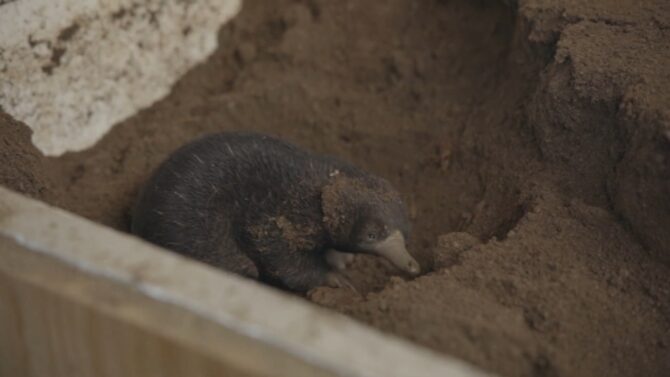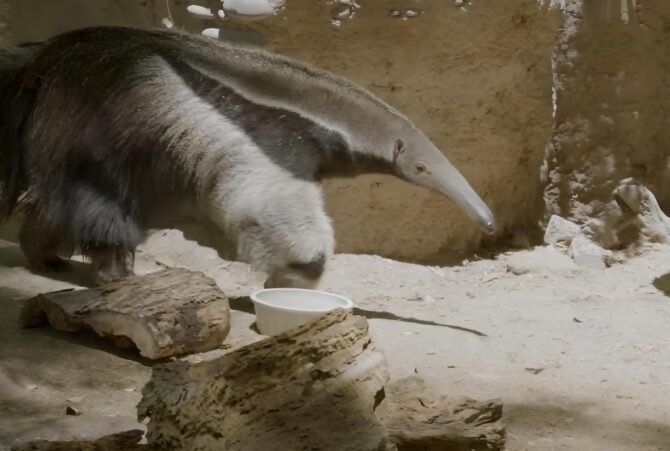Anteaters, despite being mammals, have a unique reproductive system that sets them apart from most other mammals: they lay eggs. This peculiar characteristic has been a subject of intrigue and study for biologists and researchers for many years.
These creatures exhibit a blend of mammalian and reptilian features, with egg-laying being one of the most prominent. This article will explore the reasons behind this unusual reproductive method and provide an in-depth look at the egg-laying process of anteaters.
But before we dive into the topic, did you know that anteaters aren’t the only animals that eat ants?
Monotreme Marvels

The animal kingdom is vast and varied, but few groups are as intriguing as the monotremes. Anteaters, with their unique reproductive systems, are part of this exceptional family.
This group is a living testament to the unpredictable paths of evolution, showcasing traits that blur the lines between mammals and their reptilian ancestors.
Diversity in the Monotreme Family
While the monotreme family is limited in its extant species, it boasts two of the most fascinating creatures: the platypus and the echidna. These animals hail from the diverse landscapes of Australia and New Guinea.
Their peculiar reproductive methods, combined with their unique physical characteristics, have made them subjects of intense study and admiration among the scientific community and wildlife enthusiasts alike.
Adapting to Their Environments
The platypus, with its iconic duck-bill and webbed feet, is perfectly adapted to its aquatic habitat. These creatures are often found in freshwater rivers and lakes, where they employ their sensitive bills to detect the electric fields produced by their prey, such as fish and aquatic insects.
In stark contrast, the echidna, often referred to as the spiny anteater, is built for life on land. Its body, covered in protective spines, and its sharp claws make it a formidable forager.
With an acute sense of smell and a long, sticky tongue, the echidna efficiently hunts a group of ants and termites, making them a primary component of its diet.
The Egg-Laying Phenomenon

One of the most captivating aspects of monotremes is their method of reproduction. Unlike most mammals, which give birth to live young, monotremes lay eggs.
These aren’t the typical hard-shelled eggs we see in birds. Monotreme eggs possess a soft, leathery texture, making them distinct. After laying, the mother carefully stores these eggs in a specialized pouch on her abdomen.
This pouch acts as a natural incubator, providing the necessary warmth and protection during the incubation period. Once the eggs hatch, the offspring, affectionately termed “puggles,” are relatively undeveloped. However, they are not left defenseless.
They immediately latch onto specialized milk patches on their mother’s skin, where they feed and continue their development. This unique combination of egg-laying and milk-feeding is a marvel of evolutionary biology, highlighting the diverse reproductive strategies that exist in the animal kingdom.
The Evolutionary Puzzle
The animal kingdom is a vast tapestry of evolutionary tales, with each species representing a unique chapter. Among these, the story of monotremes, particularly their egg-laying capability, stands out as one of the most enigmatic.
Tracing Back to Origins
The evolutionary journey that culminated in monotremes laying eggs is shrouded in mystery. While most mammals give birth to live young, monotremes diverge from this norm. The reasons behind this divergence are a subject of ongoing research and debate. Some scientists postulate that this reproductive method is a relic from an ancient past, a bridge between reptilian ancestors and modern mammals. Others believe it offers specific advantages in terms of energy conservation or protection against predators.
A Comparative Study: Monotremes in Focus

Anteaters, while fascinating, are not alone in their egg-laying prowess. Their close relatives, the platypus and echidna, also exhibit this trait. By comparing the reproductive systems and behaviors of these species, researchers hope to uncover common threads and evolutionary clues. For instance, the leathery texture of their eggs, as opposed to the hard shells of bird eggs, might offer insights into their evolutionary adaptations and the environments they evolved in.
The modern world poses significant threats to the survival of monotremes. Urban sprawl, deforestation, and the relentless march of agriculture are steadily encroaching upon their natural habitats. As they lose their homes, monotremes are thrust into unfamiliar terrains, exposing them to new predators and increasing human-animal conflicts.
The specter of climate change looms large, adding another layer of complexity to their survival. Rising temperatures, altered water availability, and shifting ecosystems can disrupt their feeding and breeding patterns. For species like the platypus, which relies heavily on freshwater habitats, the implications of prolonged droughts or polluted water sources can be dire.
The Silver Lining: Conservation Initiatives
Despite the challenges, there’s a glimmer of hope on the horizon. Conservationists, biologists, and environmentalists are joining forces to safeguard the future of monotremes. Research initiatives are underway to better understand their needs, behaviors, and vulnerabilities. Protected areas are being established to offer them a refuge from the encroaching urban landscapes.
Public awareness campaigns are also playing a pivotal role. By educating people about the unique attributes and importance of monotremes, conservationists aim to foster a sense of responsibility and stewardship. With collective effort and global collaboration, there’s hope that these evolutionary marvels will continue to thrive for generations to come.

Thought and Vulnerability: Insights from the Anteater
The giant anteater, Myrmecophaga jubata, serves as a poignant reminder of nature’s unpredictability. Despite ants’ constant vigilance, they fall prey to this predator.
As John Ralston Saul aptly puts it,
“Myrmecophaga jubata: The anteater. The existence of this predator demonstrates that thinking 71 percent of the time, as ants do, won’t prevent you from being eaten. Thinking less than that, as humans do, will almost guarantee it.”
Join the Conservation Effort
Understanding and appreciating the wonders of anteaters is just the beginning. We can all play a role in their conservation.
Support local and global initiatives, donate to research projects, or simply spread the word about these incredible creatures.
FAQ
Why are anteaters called monotremes?
The word “monotreme” comes from the Greek words “monos” meaning “one” and “treme” meaning “hole”. This refers to the fact that monotremes have a cloaca, which is a single opening for the digestive, urinary, and reproductive tracts.
What are the other two living monotremes?
The other two living monotremes are the platypus and the four species of echidna. The platypus is a semi-aquatic mammal that lives in eastern Australia.
The echidnas are terrestrial mammals that live in Australia and New Guinea.
Final Words
The world of anteaters, with their egg-laying peculiarity, is a testament to the wonders of nature and evolution. These creatures, while enigmatic in their reproductive ways, underscore the vast biodiversity of our planet.
As we delve deeper into understanding them, it becomes imperative to also champion their conservation. Ensuring their survival is not just about preserving a species but also about maintaining the rich tapestry of life on Earth for the generations to come.
